Traffic Signs, Signals, and Markings
1/37
There's no tags or description
Looks like no tags are added yet.
Name | Mastery | Learn | Test | Matching | Spaced |
|---|
No study sessions yet.
38 Terms
Regulatory Devices
Instruct you to stop, proceed in a certain direction, or limit your speed.
Warning Devices
Advise you of hazardous conditions or the possibility of hazardous conditions.
Guide and Information Signs
Assist you in finding your way safely or provide information to make your trip more comfortable.
Yellow Centerlines
Are used to separate traffic moving in opposite directions

Single Broken Yellow Lines
Marked the centerline when there are only two lanes of traffic.
Must drive to the right of the centerline but when it is safe you may cross this line to pass another vehicle
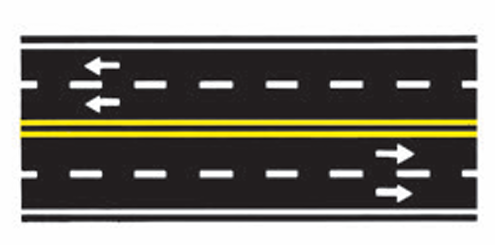
Double Solid Yellow Lines
Used to mark the center of the roadway where passing is prohibited in both directions.
You may cross these lines only to make a left turn into or from an alley, private road, or driveway
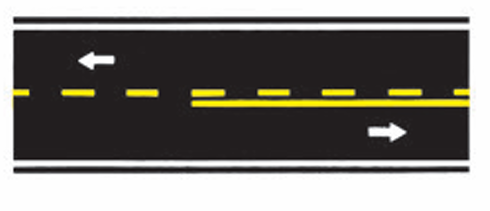
No Passing Lines
Are singe solid yellow lines used on two-lane roads to indicate zones where passing is prohibited.
You may cross the line only to make a left turn into or from an alley, private road, or driveway
White Lines
Separate lanes of traffic moving in the same direction.
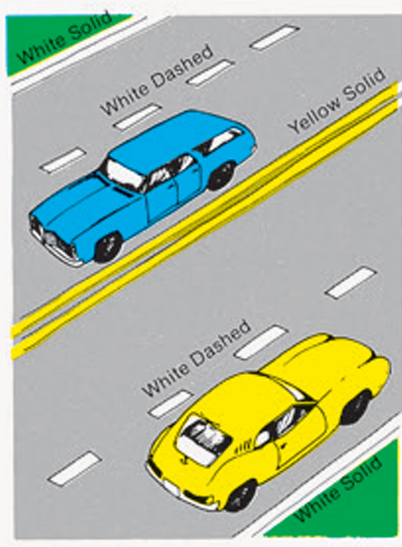
Singled Dashed White Lane Lines
May be crossed when you can do so safely
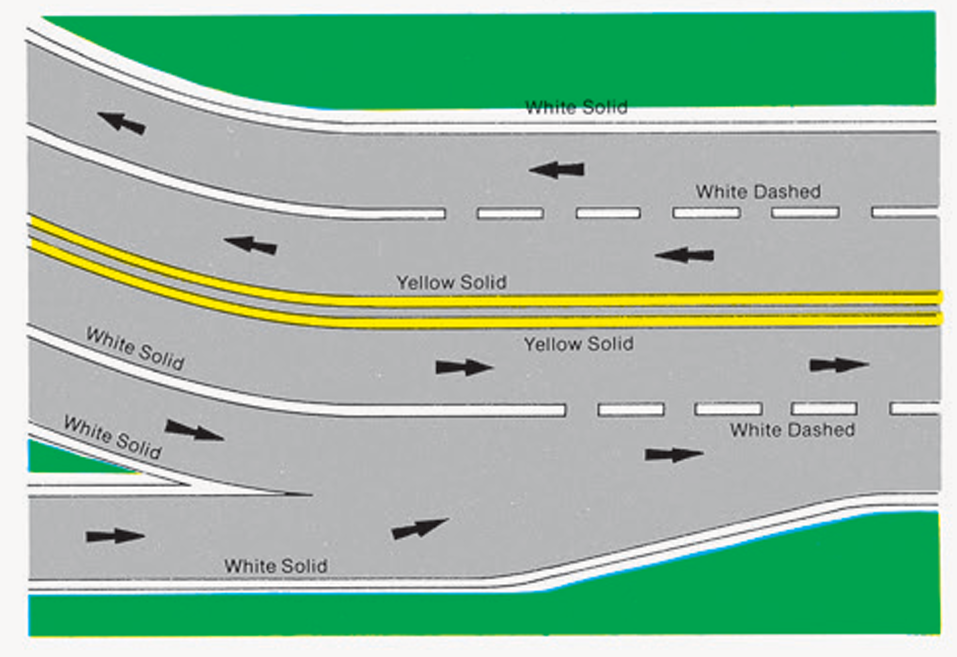
Single Solid White Lines
Indicates that movement from lane to lane is hazardous. The wider the line, the greater the hazard.
You may cross a solid white line only in unusual circumstances and then only with great care
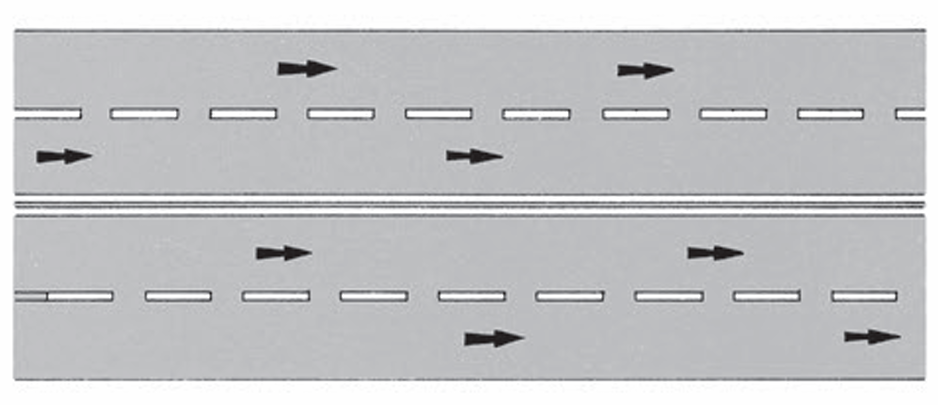
Double Solid White Lines
Indicates that movement from lane to lane is prohibited.
You must not cross a double solid white line

Red Pavement Markings
Indicates a roadway that must not be entered or used
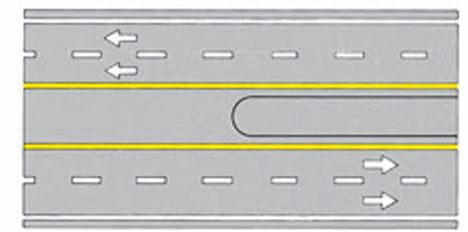
Edgelines
Are solid white or yellow lines along the edge of the roadway to be used as a safety guide. White lines are used along the right edge of the roadway and yellow edge lines may be along the left edge of the roadway on divided streets and highways
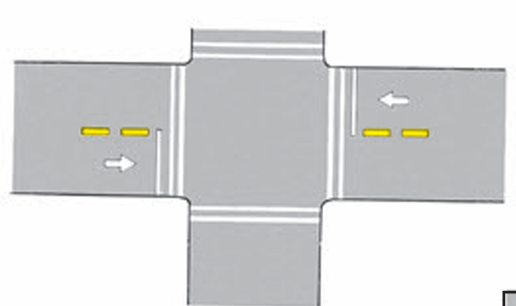
Stop Lines
Are solid white lines painted across the traffic lanes at intersections and pedestrian crosswalks indicating the exact place at which to stop.

Crosswalk Lines
Show pedestrians where to safely cross the road or street.
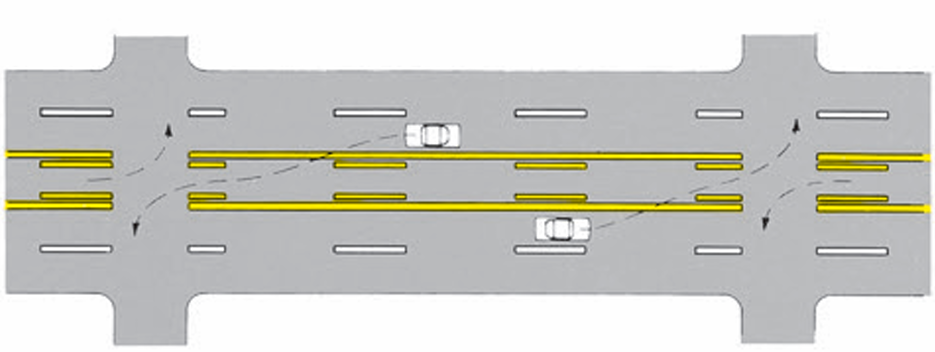
Two-Way Left Turn Channelization Markings
A combination of a yellow solid and dashed lines in the center of the roadway which mark a lane in the center of the roadway which may be used by vehicles traveling in either direction for left turn maneuvers only.
Teh lane must never be used for passing

Obstruction Markings
Solid lines painted in the traffic lanes to guide you around obstructions, such as bridge supports, in the road.
May pass to either side of the white obstruction but you must only to the right of the yellow markings

Directional Markings
White arrows or words painted in the traffic lane to indicate the direction you must go.
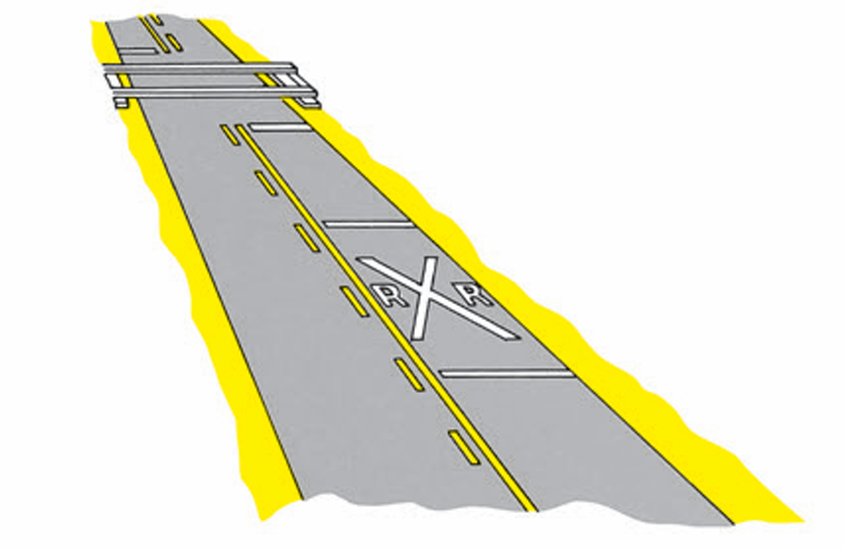
Railroad Crossing Markings
White markings painted in the traffic lane before railroad crossings. The pavement is marked with a large X and 2 R. A solid yellow centerline extends the entire distance to prevent passing, and a white stop line is painted across the traffic lane.

Traffic Island Marking
Have many different designs. Are used to direct you into separate traffic lanes.
Traffic islands are called safety islands when they are used to protect pedestrians who may have to stand in the roadway.
You should never drive into or across a traffic island
A red light means that you must stop:
At the stop signs
when there is no stop line, before entering any crosswalk
When there is no stop line or crosswalk before entering the intersection
Remain stopped until the signal changes to green
True or False: You may turn left on a red light from a one-way street into a one-way street where traffic is moving to the left, except when a sign prohibits such movement.
True
What does a red and yellow flashing signal indicate?
A red flashing light has the same meaning as a stop sign. Whereas a yellow flashing light means that you may proceed only with caution.

What do these lane control signal mean?
The red X mean you must not use that lane because the lane is being used by traffic proceeding in the opposite direction.
The green arrow means you may use that lane.
The yellow X means that you must move out of that lane of traffic because it going to be sued for traffic moving in the opposite direction. When the yellow X signal is flashing, you may only use that lane when preparing to turn left.

What does the respective color indicate? And what shape correspond to each color?
The color red indicates that an action is prohibited. It appears on signs with various shapes
The color yellow indicates a warning of hazardous or dangerous conditions. This color typically appears on a diamond shaped sign.
The color orange indicates a warning concerning road work. This color appears on rectangular, or diamond shaped signs.
The color black and white indicates a required action. Black and white signs are always rectangular in shape.
The colors green, blue, and brown are used on guide and information signs. These colors appear mostly on rectangular shaped signs

What are these regulatory signs?
A Stop Sign - must bring vehicle to a complete stop
Yield Sign - Indicate that other traffic has the right of way.
Speed Limit Sign - Established the maximum and minimum speed limits

What is this?
Reduced Speed Ahead Sign - gives you advance notice to slow your vehicle to a lower speed limit posted ahead
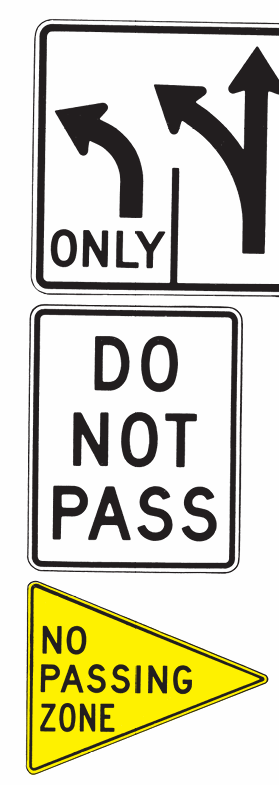
What are these signs?
Lane Use Control Signs - indicate direction to move vehicle
Do Not Pass Sign - Where you must not pass on two or three lane roads.
No Passing Zone Sign - Points to the beginning of the no-passing zone
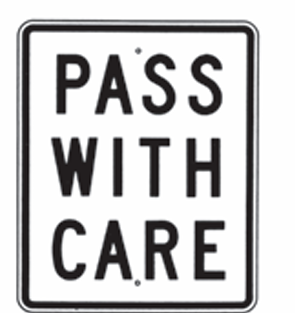
What is this sign?
Pass With Care Signs - Indicate the end of a no passing zone.
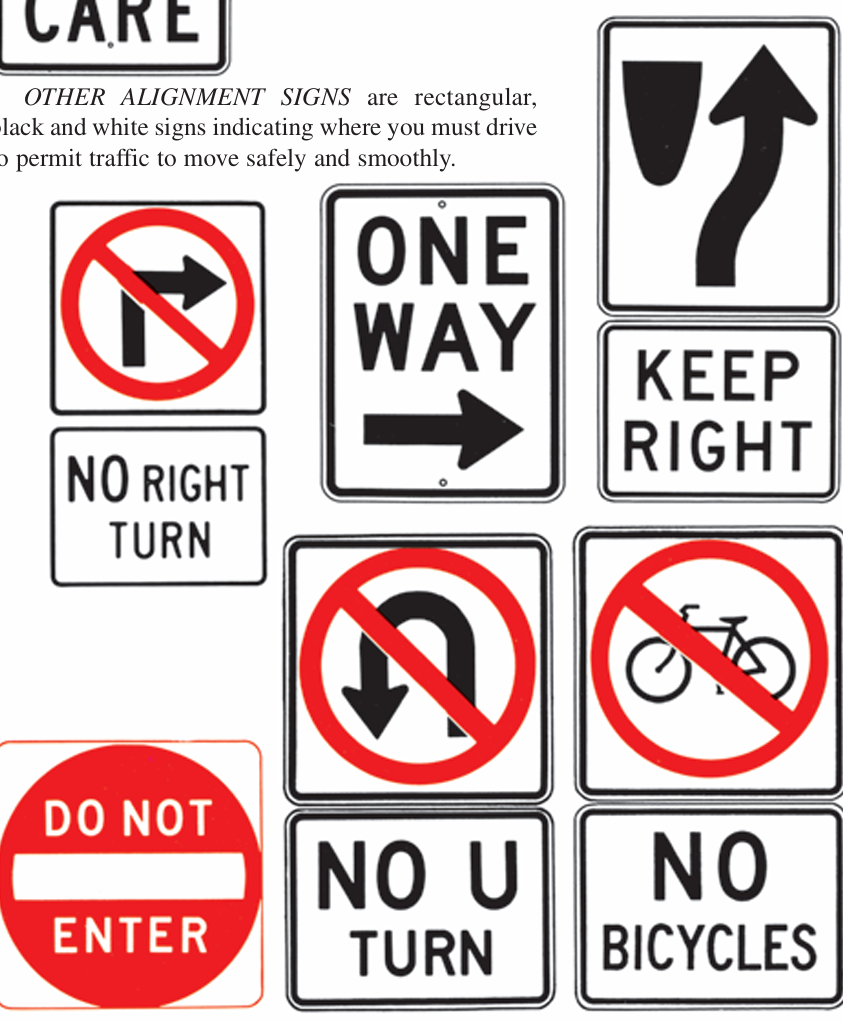
Other Alignment Signs
Signs indicating where you must drive to permit traffic to move safely and smoothly.
Are rectangular, black and white signs

Exclusion Signs
These signs restrict or prohibit vehicles or vehicle movements or prohibit some other activity
Are rectangular signs and contain a red circle on a white background or a red circle with a red diagonal on a black and white background.
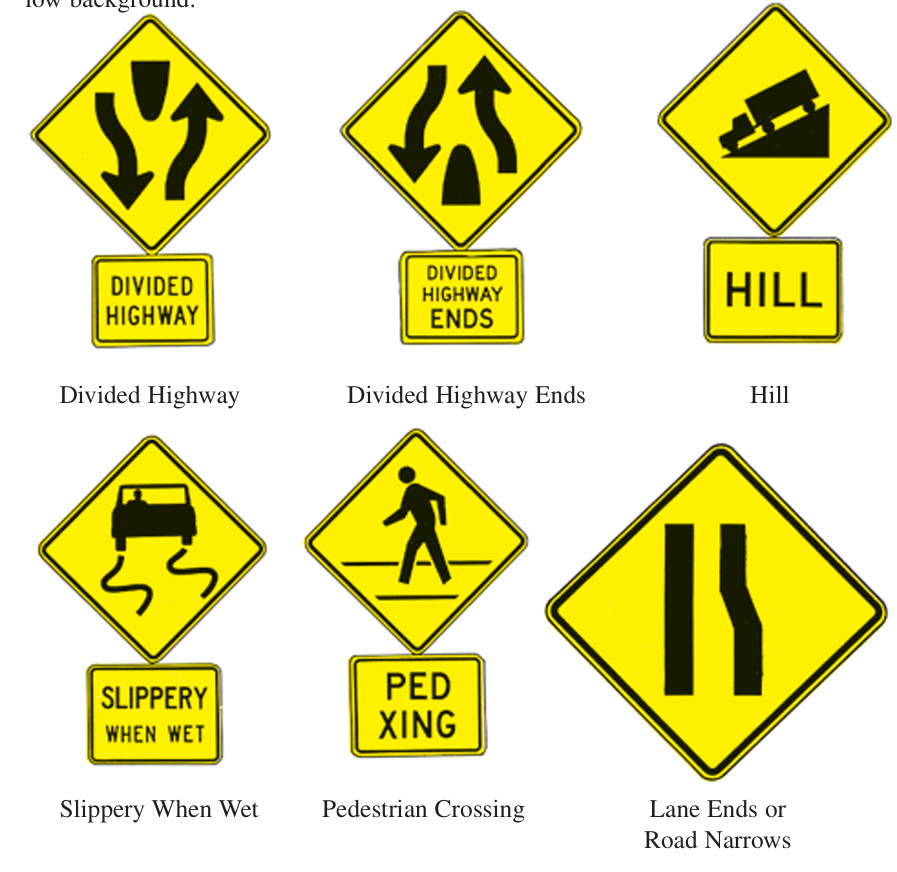
Warning Signs
Warn you of dangers that exist or may be found on or near the road.
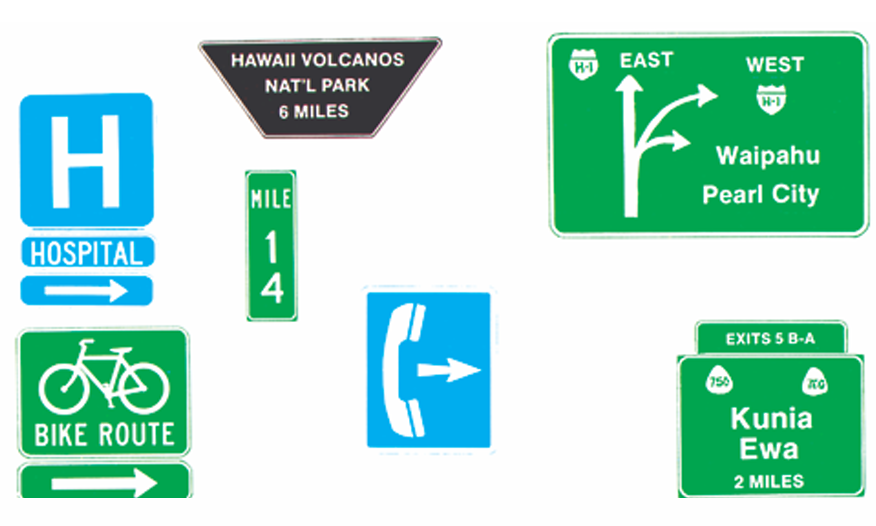
Guide and Information Signs
Contain information regarding your location and the location of places and services.

Construction and Maintenance Signs
Used to notify drivers of unusual or potentially dangerous conditions in or near work areas.
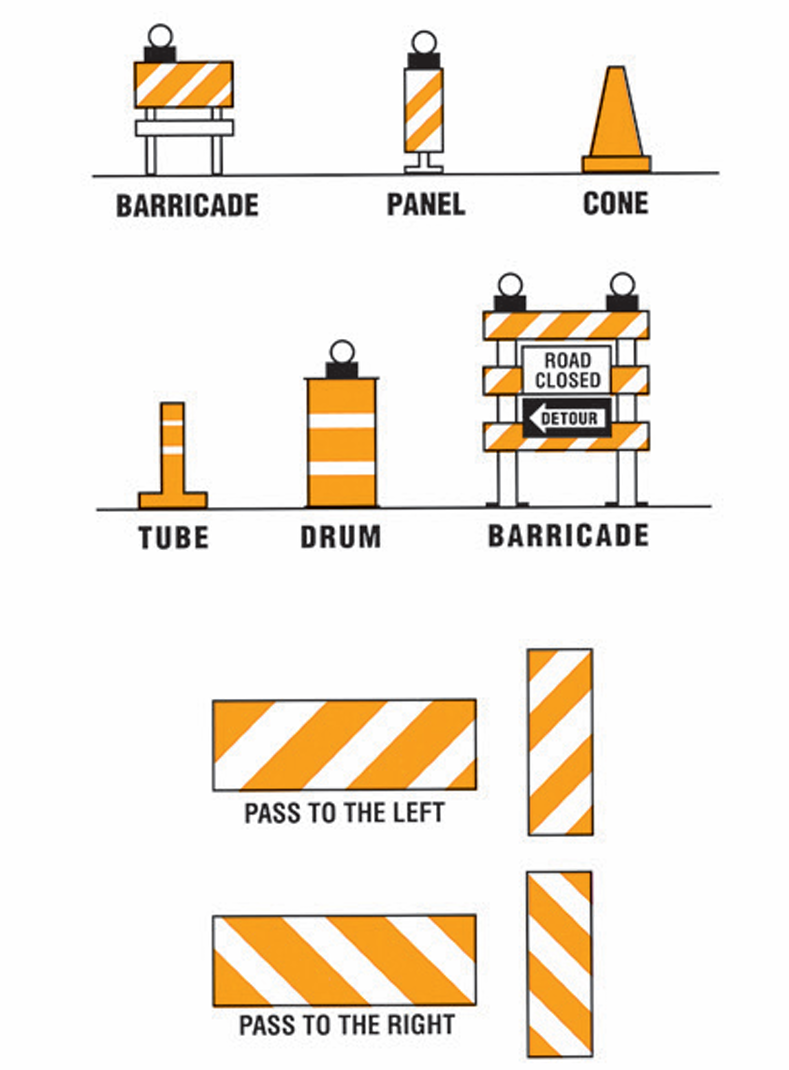
Channelizing Devices
Barricades, vertical panels, drums, cones, and tubes are the most commonly used devices to alert drivers of unusual or potentially dangerous conditions in highways and street work areas and to guide drivers safely through work zones.
Diagonal stripes sloping downward to the right mean the driver should bear to the right and vice versa for left.

Flashing Arrow Panels
Large flashing sequencing arrow panels may be used in work zones both day and night to guide drivers into certain traffic lanes and to inform them that the part of the road or street ahead of them is closed.
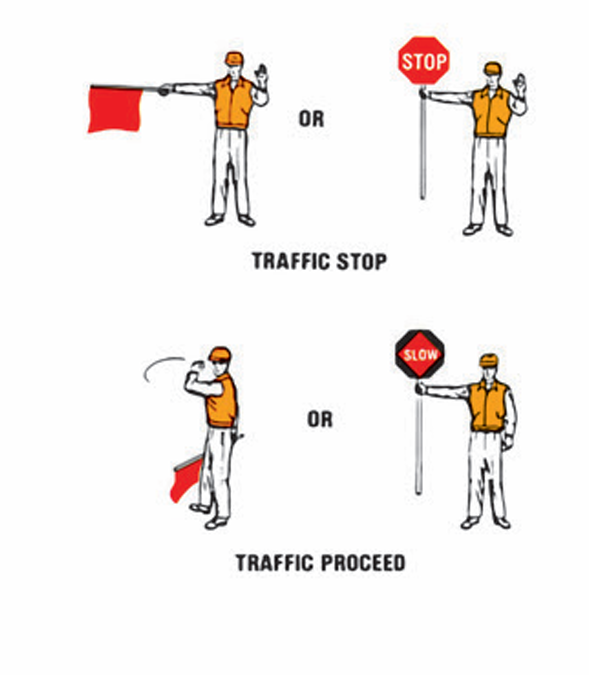
Flagpersons
Often provided in highway and street work zones to stop, slow, or guide traffic safely through the areas.